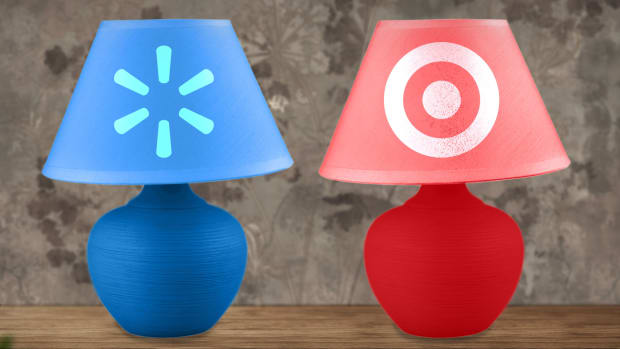The pandemic has made inventory projections tricky. Usually, when a retail chain makes inventory decisions, it uses its past history and factors in any new information.
In a normal year, that model makes sense. In our current Covid pandemic hellscape, past behavior may not be indicative of what happens in the future. Remember when stores had toilet paper shortages? That happened because a lot of people stopped going to work and office toilet paper and home toilet paper are different things.
Production had to be changed to meet the change in where people used toiler paper. That same problem happens across the entire retail supply chain as retailers including Target (TGT) and Walmart (WMT) first struggled to have enough inventory, then fought to have the right inventory, and now are dealing with having too much inventory.
That's a problem that Ark Investing's Cathie Wood pointed out on Twitter.
Basically, the two retailers have more inventory than they want. That ties up cash and, depending upon what the inventory is, can lead to items having to be discounted or certain products going bad. It's also possible that both chains (which don't exactly sell trendy merchandise or fast fashion) could simply work through their inventory excess over the next quarter or two.

TheStreet
Target and Walmart Comment on Inventory
Both Target and Walmart acknowledged having inventory problems during their most recent earnings calls. Walmart CEO Dog McMillon laid out why his company has too much inventory on hand and the market conditions that contribute to it during the chain's first-quarter 2023 earnings call.
"The second item relates to our general merchandise (GM) inventory level, primarily in Walmart U.S.," he said. " GM was a lower percentage of total sales in Q1, resulting in an unfavorable gross margin mix. We also had higher costs for containers and storage, and we've taken and are taking steps to contain those cost pressures to the first half of this year."
The CEO acknowledged that the quarter was going to be a challenge when it came to general merchandise because the company was "up against stimulus dollars from last year."
That, however, was not the only reason Walmart added to its inventory.
"The rate of inflation in food pulled more dollars away from GM than we expected as customers needed to pay for the inflation in food. We like the fact that our inventory is up because so much of it is needed...but a 32% increase is higher than we want. We'll work through most or all of the excess inventory over the next couple of quarters," he shared.
Target had a similar problem with customers buying different items than what the company had forecast.
"More specifically, we saw a much higher than expected rate in transportation costs and a more dramatic change in our sales mix than we anticipate. This resulted in excess inventory, much of it in bulky categories, which put additional strain on an already stretched supply chain," CEO Brian Cornell said during his chain's first-quarter earnings call.
Cornell noted that the change in consumer spending was more broad than Target had expected.
"While we anticipated a post-stimulus slowdown in these categories, and we expect the consumers to continue refocusing their spending away from goods and services, we didn't anticipate the magnitude of that shift," he said. "As I mentioned earlier, this led us to carry too much inventory, particularly in bulky categories, including kitchen appliances, TVs, and outdoor furniture. And with very little slack capacity after two years of unprecedented growth, we faced elevated costs to store and indicated rightsizing our inventory position. Nevertheless, we're still seeing healthy overall spending, I guess, even as their spending continues to evolve."
How Are Walmart and Target Handling Excess Inventory?
"We started being aggressive with rollbacks in apparel, for example, during Q1. Even with reduced prices, the apparel margin can still be helpful to our overall mix," McMillon said.
Target Chief Growth Officer Christina Hennington explained that the chain had been careful, but it still had to make some very difficult choices.
"Despite this careful approach, the mix of actual demand materialized differently than we had anticipated. In addition, as supply grew and demand shifted away from bigger, bulkier products like furniture, TVs and more, we needed to make difficult trade-off decisions," she said. "We could keep this product knowing would sell over time or we could make room for fast-growing categories, like food and beverage, beauty and personal care, and household essentials."
Target chose to use discounts to sell off some its bulkier items rather than store them.
To preserve the quality of on-shelf presentations and support the guest experience, we chose the latter, leading to incremental markdowns that reduced our gross margin," she said. "While these were difficult decisions, we believe they'll pay off in the long term, given that building long-term loyalty remains our top priority."







